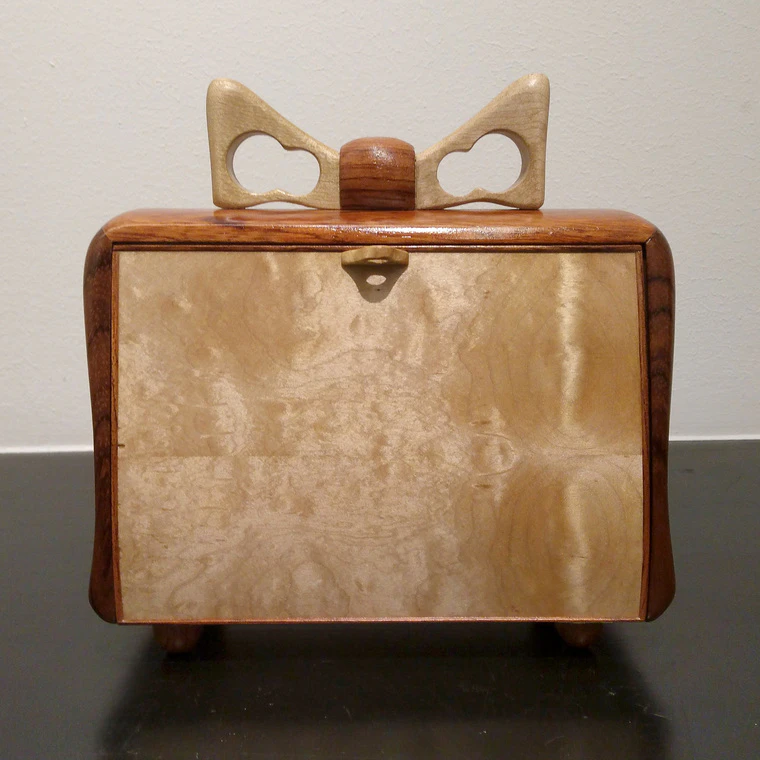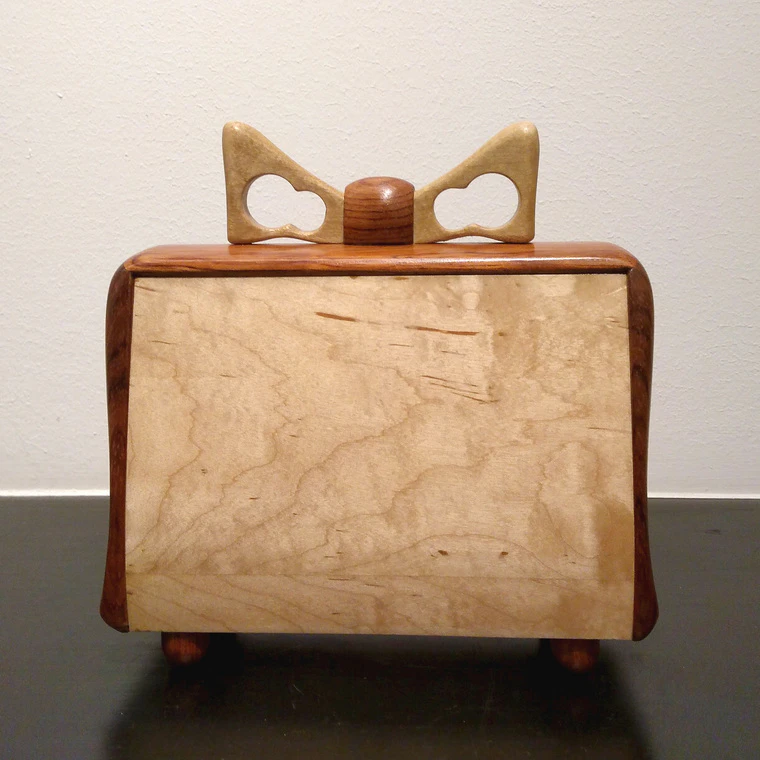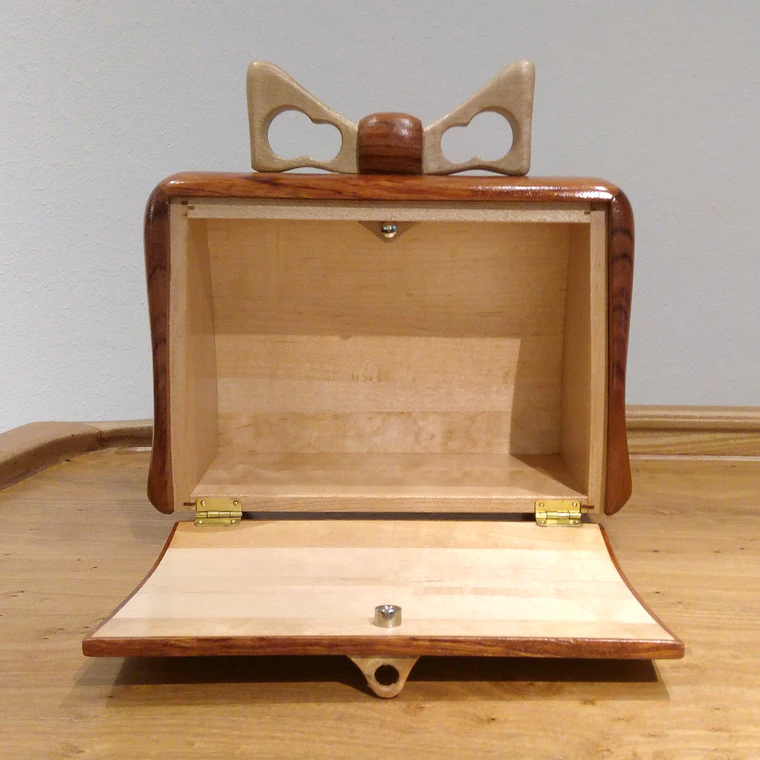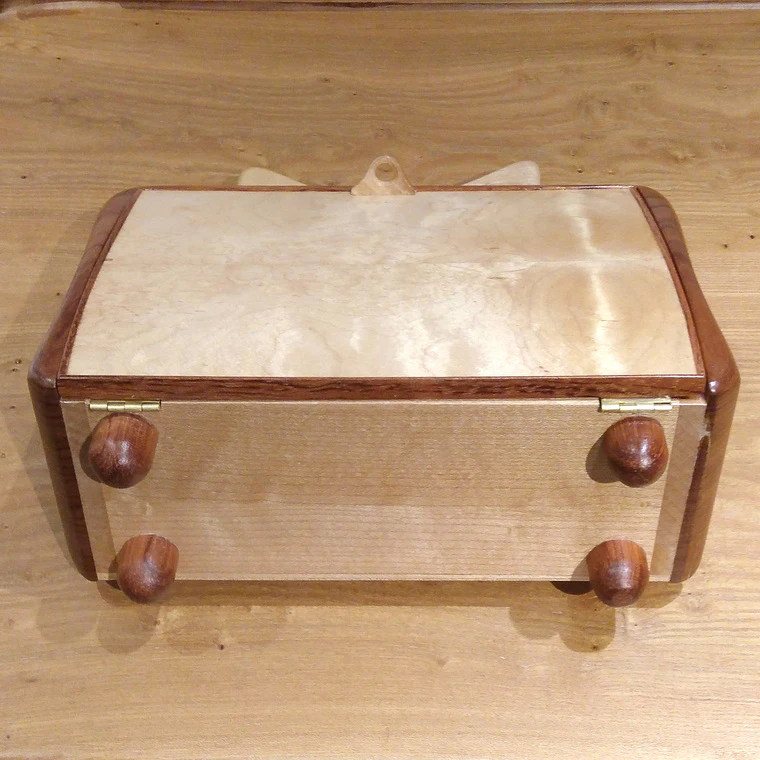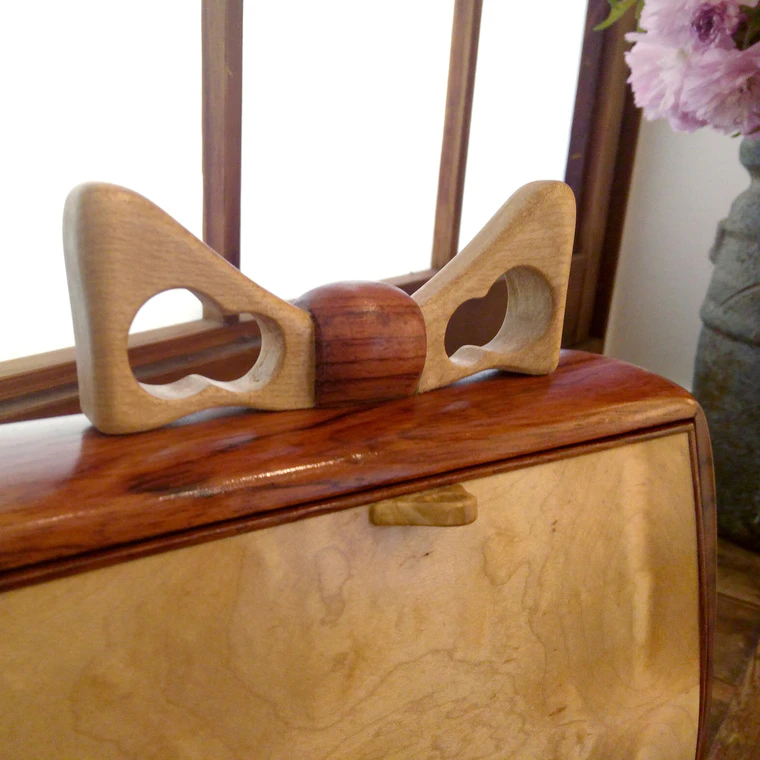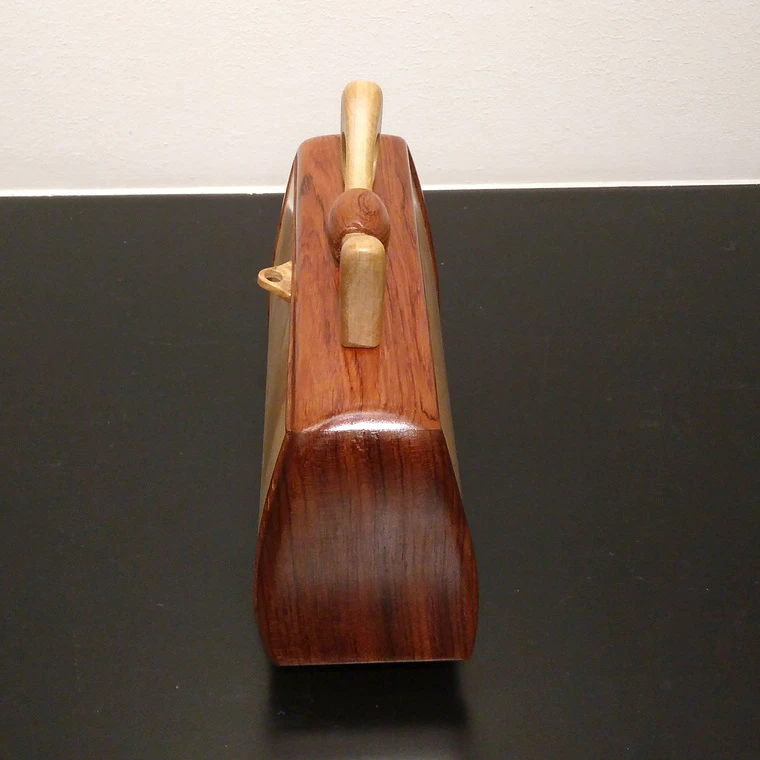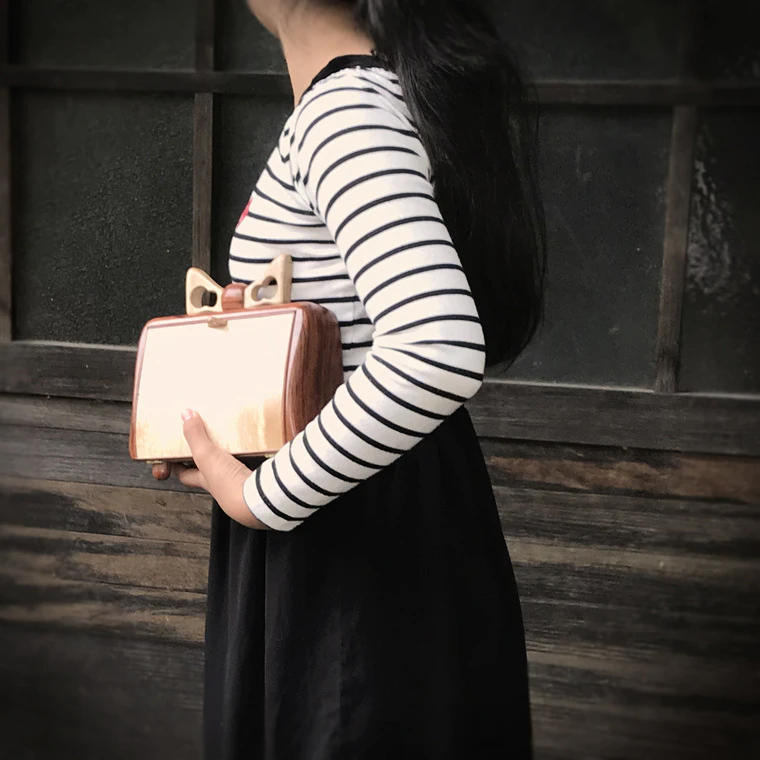Maple and Bubinga clutch bag
H 20.6 x W 19 x D 8.2 cm,Year.2019Katsuyuki Okada
1943 -- Wood and Bamboo
- Price Range Please Inquire
About the Artwork
A little handbag with a handle that looks like cat ears, but it is actually a big ribbon.
Although the motif is western style, it looks Japanese traditional in a modern style, probably because I am Japanese or because of the Japanese wood joinery techniques.
The white part is maple wood. Maple is a wood Japanese people are quite familiar with.
It is a dull and heavy kind of wood, but after being processed, it becomes white like silk with beautiful patterns that look like natural glitter.
Bubinga is an African wood with a pink-red color. This color matches the maple wood and creates a Japanese traditional - modern color. But recently, as it has been registered under the Washington Convention, it is quite difficult to obtain.
The red and white colors are charming, but as the color tones are soft, it can be used at any age.
The size is a little small, so it may be perfect for people that are not so tall.
As I used traditional wood joinery techniques, no metal parts have been used except for the hinges and latch. The wood color is its natural color with no colors added.
Description
-
CategoryWood and Bamboo
-
MaterialsMaple, Bubinga
-
DimensionsH 20.6 x W 19 x D 8.2 cm
-
Year presented2019
-
InstructionsAs a transparent coating is applied, this bag is waterproof.
However, please avoid sudden heat (placing under the heater, near a hot kettle or iron kettle etc.) or use of sharp blades, hammers etc. as this may cause damage to the wooden body. Please also avoid nail polish and other chemicals as this may cause the coating to peel off.
Please be aware that wood expands and shrinks depending on where it is used as it absorbs and releases moisture even after being processed. For example, even by moving the bag among nearby regions in western Japan, a distortion may occur as the humidity is different.
The distortion is very small, but this may cause a slight defect.
Please be aware of this as it is the nature of wood.
Please feel free to contact me if you have any questions.
Techniques Used
Wood joinery
In wood joinery (sashimono), wood boards are cut into panels with care to how the grain patterns will fit together in the final piece. The wooden panels are then cut or carved to create interlocking joints. These joints, which are the key feature of wood joinery, make it possible to connect boards at right angles to produce boxes and other articles. Wood joinery is assembled without the use of nails or any other metal hardware.
Please feel free to contact us to commission work, check artworks available for purchase etc.

